How art and design can transform the daily commute
- Published
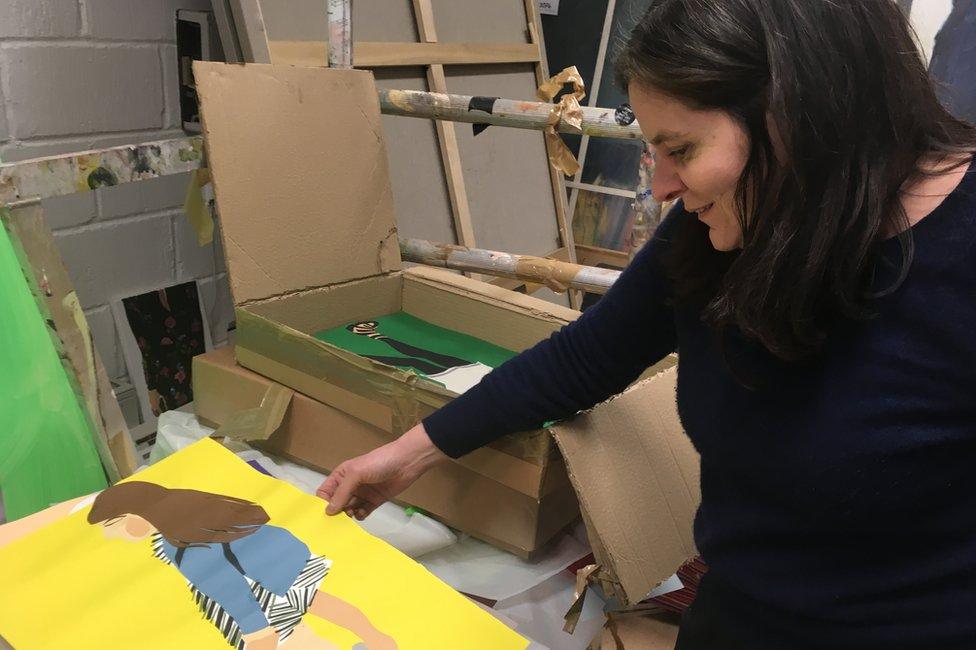
Chantal Joffe is making images of people in a bold cut-out style for the stations
When Crossrail opens later this year it will change how hundreds of thousands of journeys are made through London each year. It's Europe's biggest civil engineering project, designed to shift people quickly and efficiently. But will the art and architecture of Crossrail - officially now the Elizabeth line - also appeal to the eye?
Chantal Joffe considers herself a private person but her new artwork will be big and defiantly public. She's one of the artists chosen by Crossrail to provide pieces integrated into seven of the 10 big new stations for London.
For Whitechapel she's designing 20 images of people in a bold cut-out style. Each will be roughly two metres by three and positioned behind benches on the new line's subterranean platforms.
What's rare for public art is that her images feature not abstracts or VIPs but the ordinary people of Whitechapel. It's a once poor area long favoured by migrants, though like much of London it's changing rapidly.

The area around Whitechapel station is a "beautiful and diverse place", says Chantal Joffe
But the Bangladeshi community, which arrived in large numbers in the early 1970s, flourishes here and they're one of the things Joffe wanted to celebrate.
"It's a beautiful and diverse place and these are the kind of characters you see out on the street. The images will be made of very thin metal but I hope they'll feel almost like paper cut-outs, which is how I worked on them."
Initially she did her research in the busy street market immediately outside the station.
"But I soon realised it was actually too crowded and mad for taking the photographs in. So mainly I went on Sunday afternoons when the market isn't open. I was often with my daughter who was brilliant at pointing out a particular person or a scene.
"I didn't set out to reproduce individual faces or figures - though I admit I did take inspiration from people's footwear. There's something intimate and vulnerable about what people have on their feet, especially when it's sandals.
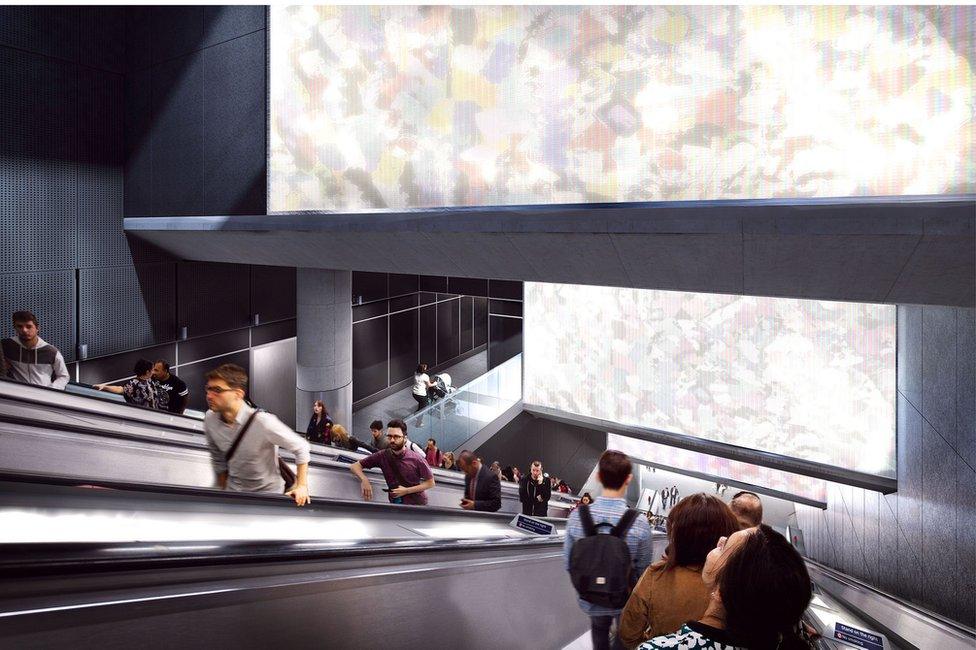
Tottenham Court Road station will bring a splash of art to the escalator ride
"I was working with a proper camera as I needed to come back to my studio and print off high-quality images. But because we're all now surrounded by people taking endless selfies on their phones no one really took much notice of what I was doing.
"I wanted an array of different people but it was especially interesting doing Asian head-scarves because they work so well in an image. And they have a real echo of the veils in Renaissance art: there's always the formal consideration of how you place a head within the head-scarf."
Joffe says she's never before made public art.
"So I spent a lot of time in the British Museum, looking at wonderful sculptures and images from the Greeks or from Ancient Egypt - I wanted to see how they handled images for public show. It's a big leap from showing in a small gallery.
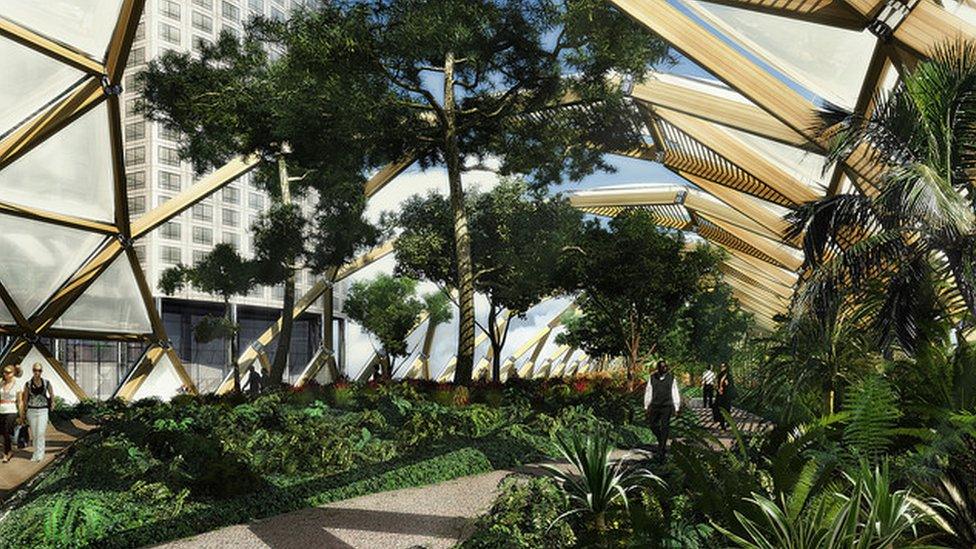
Canary Wharf station will bring nature inside
"I'm very aware that people may be looking at this work decades from now. But that made me even more certain this little corner of the new line had to be intimate and homely. I didn't want big and industrial."
The man who since 2008 has had to worry about all elements of Crossrail station design, big and small, is head of architecture Julian Robinson.
"Architecturally it has been a vast project. There are 10 big new stations on the Elizabeth line - and that's before you talk about the outlying places where we've made smaller changes to existing sites.
"The rule was to have a more or less standard approach to the new platforms. But the design elements passengers encounter buying a ticket or on the way down to platform level will be more variable. It was an evolutionary and pragmatic process.
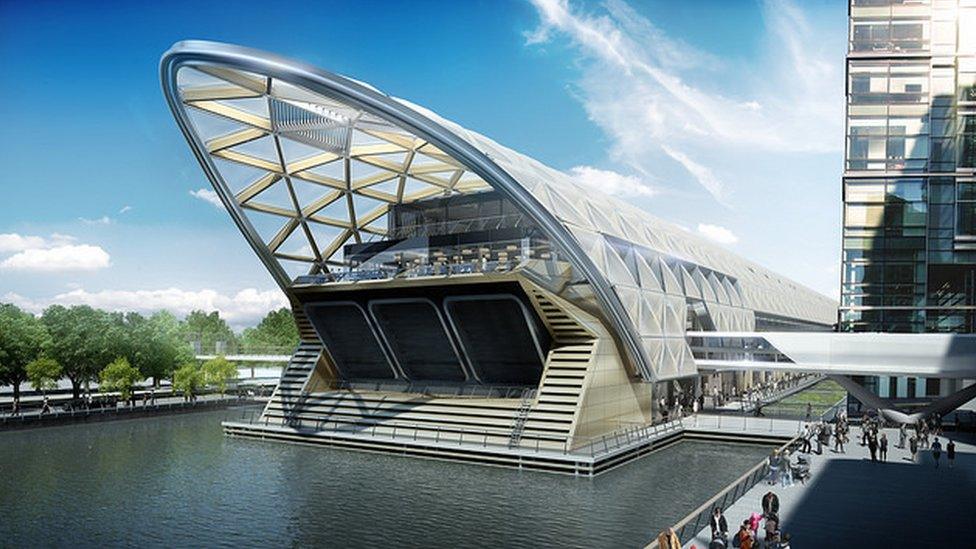
Is it Canary Wharf or Sydney Opera House?
"A good example is the architecture at Tottenham Court Road station. There will be two very different exits one of which is totally new, at the Dean Street end of the site. What we've designed hints at this being Soho and media-land.
"It's been given a slightly darker feel and we were more theatrical in our lighting. But these are subtle architectural interpretations of an area - we didn't want anything literal.
"The use of materials at platform level is often a result of the space the engineering gave us. Or you could trace that back even further and say a lot of the design is dictated by the length of the train and the numbers of people who will be on it.
"On the platforms we've used hard-wearing elements such as concrete and glass and stainless steel.
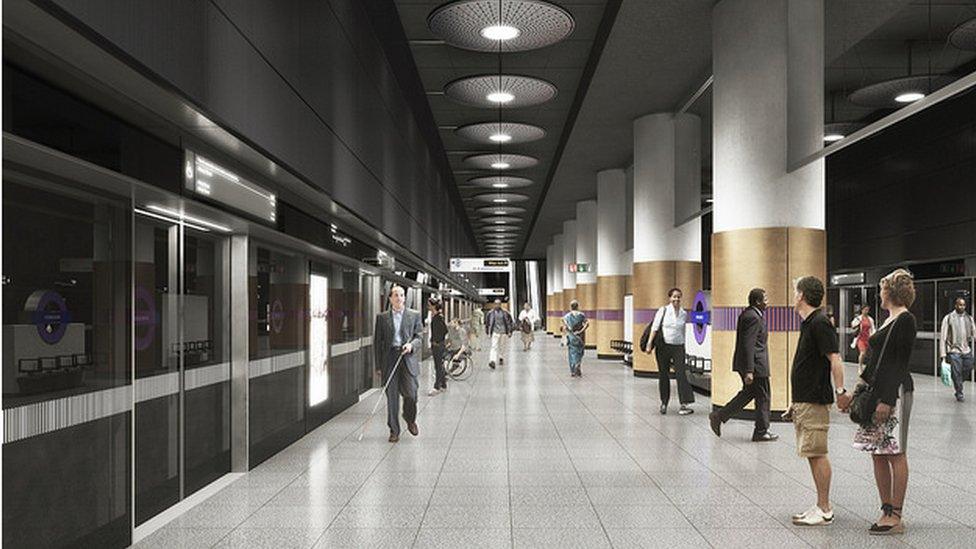
The aesthetic use of lighting is clear at Woolwich station
"We've struck a balance between having a very clear line identity in architectural terms - which historically certain parts of London Underground also had - and having a different character for each station. That's why the artwork commissioned for stations is important."
Ultimately, Robinson is facing the same design challenge as Joffe - though the scale is entirely different. Yet he shares her relish for influencing how London will look in years to come.
"It's one of the reasons I do the job. There's very little you do these days that you can say has true civic value, in terms of building infrastructure.
"Of course when we open I hope people will admire what we've built. But above all I want them to think the stations work as stations. And a century from now I hope people will think the same thing."
Crossrail opens in three stages, starting in December 2018.

Follow us on Facebook, external, on Twitter @BBCNewsEnts, external, or on Instagram at bbcnewsents, external. If you have a story suggestion email entertainment.news@bbc.co.uk, external.